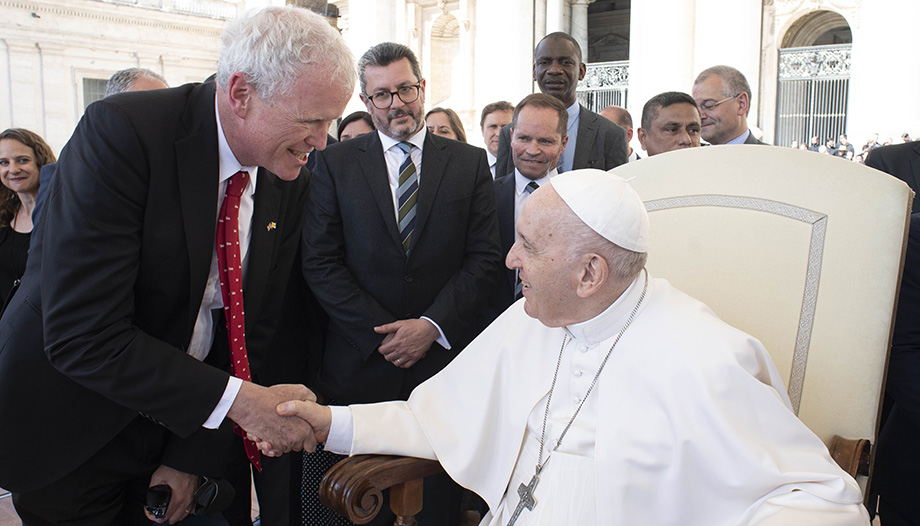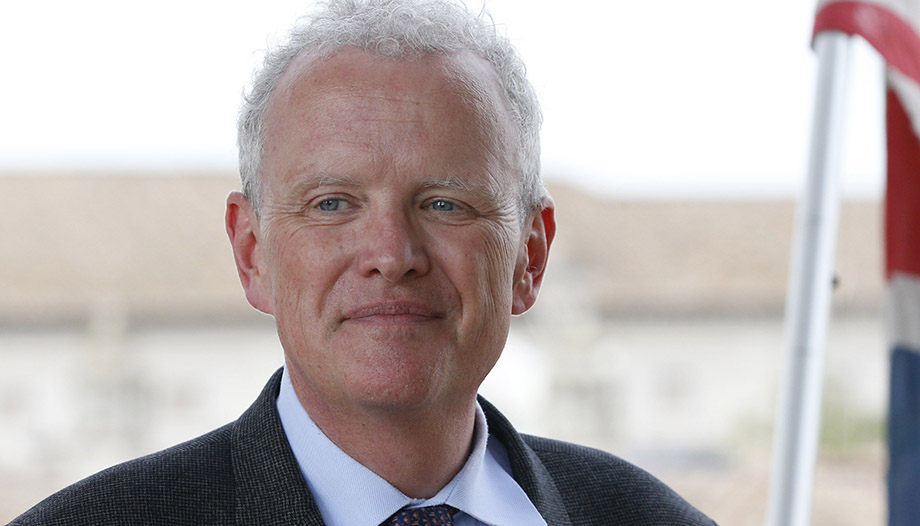Christopher John Trott has extensive experience in international diplomacy. Born on February 14, 1966 in London, he has served as a diplomat in countries such as Myanmar, Japan, Senegal, Mali, Cape Verde and Guinea-Bissau and Sudan and South Sudan. All this, before becoming Britain's representative to the Holy See.
When was the figure of the British diplomat officially born?
- Those maintained with the Pope are the oldest relations that my country can boast. It is believed that one of the most famous Anglo-Saxon kings, Alfred "the Great", who is credited with defeating the Vikings, went to Rome when he was ten years old, around 854, to receive the blessing of Leo IV, who, according to sources, blessed him "as a king".
In the Europe of the Middle Ages, marked by the rivalry between the English and French kings, an alliance with the Pope could bring a certain moral authority and increase the strength of an alliance.
The first time there was an ambassador was in 1479, when King Edward IV sent John Sherwood, later Bishop of Durham, to be his representative to Sixtus IV. We know of at least a couple of other ambassadors sent by the Tudor court to Rome before Henry VIII decided to break with Roman Catholicism in 1537.
In fact, for some two hundred years relations between the Holy See and the United Kingdom were mutually antagonistic. But at the end of the war against Napoleon, in which Catholic and Protestant countries allied against the French, relations improved.
In particular, during Cardinal Consalvi's time as Secretary of State, the Congress of Vienna of 1814-54 saw Britain and the Holy See collaborating with other countries to redraw the map of Europe.
In the following decades, the laws restricting Catholicism in Great Britain were repealed, which led to a true renaissance of the faith with the construction of new parishes and cathedrals from 1840 onwards.

What role did the two World Wars, particularly the First World War, play in the field of diplomatic relations, also taking into account Italy's behavior?
- Italy, initially a member of the Triple Alliance, did not join forces with the Germans and Austrians, but remained neutral and was courted by both sides. To strengthen its diplomatic presence in Rome, the United Kingdom recognized the Holy See and promoted a mission by the Prime Minister, Sir Henry Howard, in December 1914, to offer London a better knowledge of what was happening in a potentially hostile capital, as well as to try to influence the Holy See to be more critical of the conflict.
After the war, it was decided to keep the diplomatic headquarters open, which later proved useful in World War II. In wartime, diplomatic relations were broken off and embassies were closed.
Thus, there were no British diplomats accredited to the Quirinal during the period of Italy's alliance with Germany. But the British Minister to the Holy See and his colleagues remained, albeit trapped inside the Vatican, for the duration of the hostilities, without direct contact with Mussolini or his government.
Fast forward some forty years, to the early 1980s, and we come to the formalization of diplomatic relations between the Holy See and Great Britain....
-Exactly so, as I have tried to summarize in the brief historical excursus. The eighties opened with profound changes, and the new Pope surpassed all previous Popes in his desire to travel.
After what I imagine were difficult negotiations between the United Kingdom and the Holy See in 1982, two things were agreed between Rome and London: a papal (pastoral) visit to Britain and the elevation of our relationship to full diplomatic relations. This led to the appointment of a British ambassador to the Holy See and an apostolic nuncio in London.
Thus, in March 1982, my first predecessor of the modern era, Sir Mark Heath, submitted his letters of appointment as ambassador to the Pope John Paul II. Since then, there have been nine other ambassadors before me, including three women, and at least one Catholic ambassador.
Why does a country like the UK place so much value on having an Ambassador to the Pope? What could a diplomat talk about with the Holy See officials?
-The historical summary I sketched above offers a first clue. The Holy See is a State, a member of the family of nations. It is a permanent observer at the United Nations and a member of the various UN Agencies. It participates in all the multilateral forums that provide the world with the framework for coexistence. And as such, the Holy See is part of the global conversations on the challenges we face today, such as climate change, the Sustainable Development Goals, poverty eradication and universal education.
Secondly, it is an obvious point of reference for interacting with the Catholic Church and all its various institutions and non-governmental organizations active in the world, from the Community of Sant'Egidio to the Catholic Church. Sant'Egidio to Caritas Internationalis.
If there is an issue, virtually anywhere, that we, as an international community or as the United Kingdom, are trying to resolve, there is usually some involvement of Catholic realities or a Church-supported NGO.
In the light of your experience, can you give some examples of diplomacy that truly serves people and communities?
- The task of the international community is to work to try to bring governments to the table to find solutions to conflicts.
Often, however, our ability to create lasting peace is limited. To do so, we need the language of forgiveness. And this is something only religious leaders can do, and Pope Francis certainly has a prominent role to play in the world.
I still remember when he kissed the feet of South Sudanese leaders to plead for peace, in 2019 at the Vatican. Not coincidentally, the first thing he did as ambassador was to attend the climate conference with the Pope at the Vatican. There, religious leaders signed a petition for governments to take the climate crisis seriously, making an important contribution to the issue.
In another field, the Church's action is also fundamental: in the promotion of health and education. In South Sudan, the only students who reach higher education are those educated by the Catholic Church, because the population cannot count on the government's commitment.
Finally, Ukraine, the greatest challenge facing us today. Here too the Holy See, and the Pope himself, have a role to play in helping, mediating and providing moral authority to put an end to the slaughter of innocent civilians at the hands of the Russian military.
The Pope's message has been increasingly direct, speaking of "unacceptable armed aggression" and calling for an end to the massacre.








